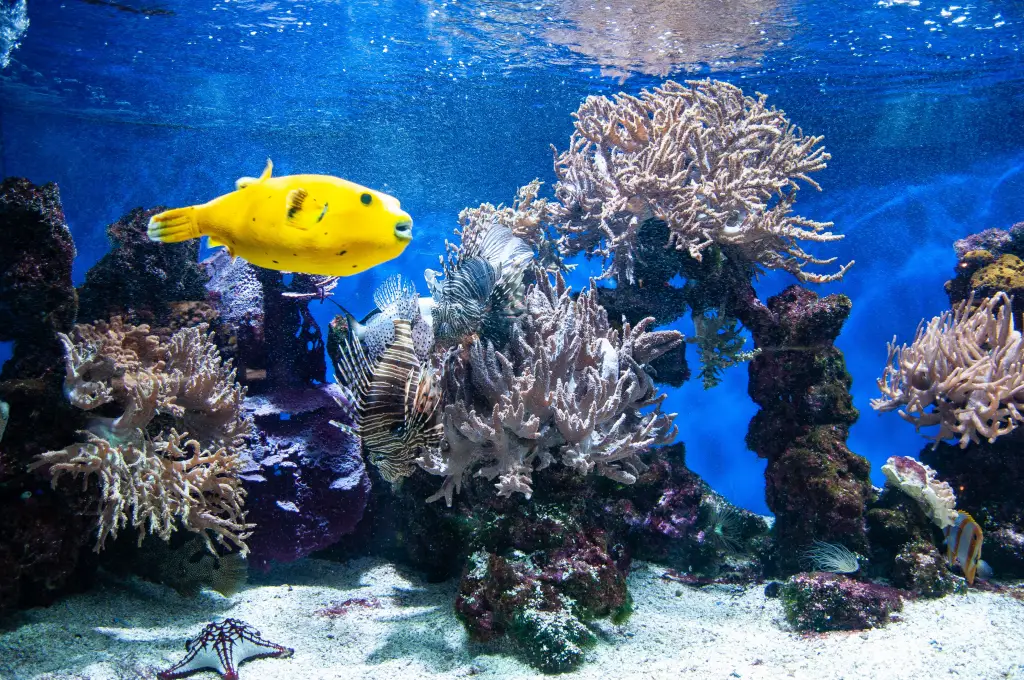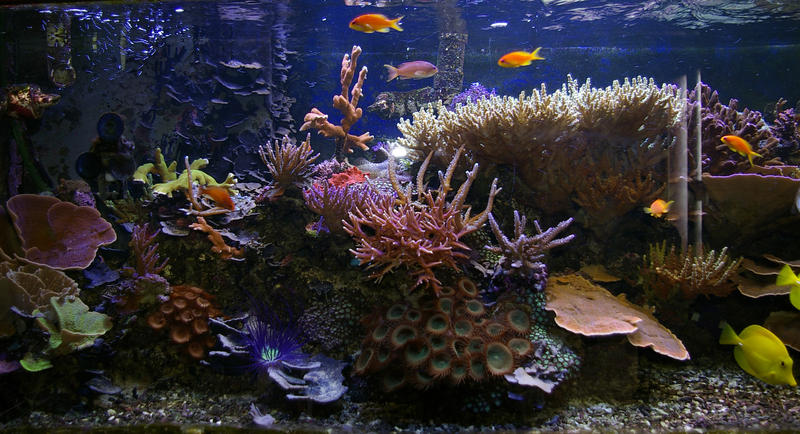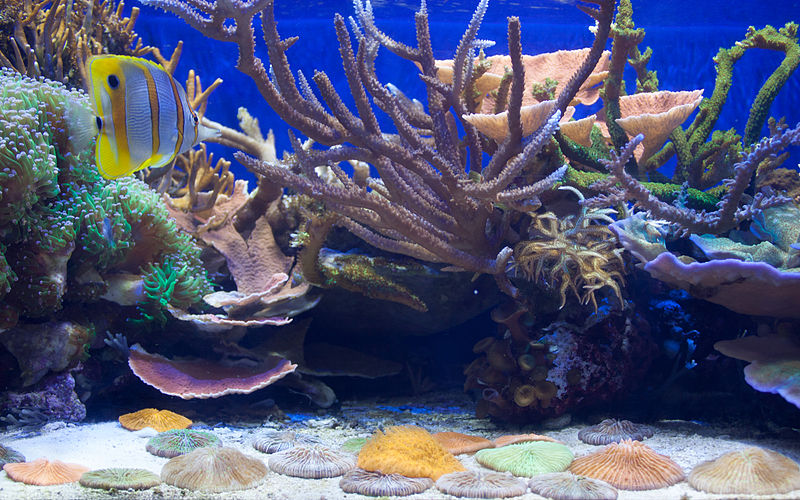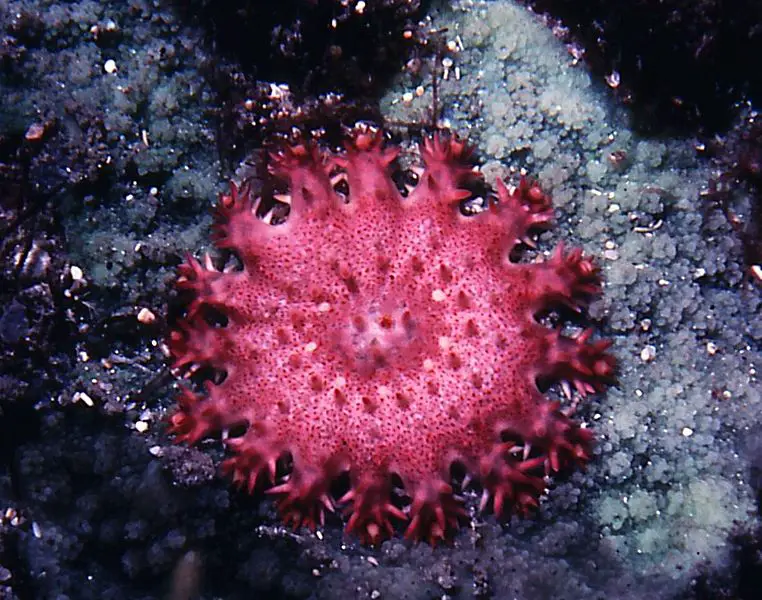How often should I perform water changes in my coral tank, and what is the best method?
Introduction
Maintaining a thriving coral tank requires attention to detail and regular care. One crucial aspect of caring for your coral tank is performing water changes. In this article, we will explore the importance of water changes, how often they should be performed, the best method for executing them, and various tips to make the process easier. Understanding the significance of water changes and following the proper procedures can create a healthy environment for your coral and promote their growth and vitality.
Ensuring optimal water quality is vital for the well-being of your coral inhabitants. Water changes play a significant role in maintaining the ideal chemical balance, removing accumulated pollutants, and replenishing essential elements in the tank. In addition, by keeping the water conditions pristine, you can prevent the onset of common issues such as excessive algae growth, coral bleaching, and diseases. Now, let’s delve deeper into the specifics of water changes and discover the best practices for achieving a thriving coral tank.

Why water changes are essential for coral tanks
Water changes are integral to maintaining a healthy and thriving coral tank. They serve several crucial purposes that directly impact the well-being of your coral inhabitants. Let’s explore why water changes are essential:
- Removal of accumulated toxins and pollutants: Over time, various substances, such as uneaten food, decaying organic matter, and metabolic waste products, can build up in the aquarium water. These pollutants can lead to deteriorating water quality, posing a threat to the health of your corals. Regular water changes help eliminate these toxins, ensuring a clean and stable environment for your coral.
- Maintaining proper chemical balance: Coral tanks require specific water parameters, including pH levels, salinity, and nutrient concentrations, to support coral growth and vitality. Through water changes, you can restore and maintain the optimal chemical balance necessary for the well-being of your coral.
- Replenishment of essential elements: Essential elements, such as calcium, magnesium, and trace minerals, are vital for the growth and development of coral. Water changes help replenish these elements, ensuring your corals have access to the nutrients necessary for their overall health and coloration.
- Prevention of excessive algae growth: Algae can quickly become a nuisance in a coral tank, competing for nutrients and light. Water changes help control and reduce algae growth by removing excess nutrients, providing a cleaner and clearer environment for your coral to thrive.
By understanding the importance of water changes, you can establish a routine that promotes your coral tank’s long-term health and vibrancy.
How often should water changes be performed?
The frequency of water changes in a coral tank depends on various factors, including tank size, stocking levels, nutrient levels, and overall water quality. While there is no one-size-fits-all answer, here are some general guidelines to help you determine how often water changes should be performed:
- Weekly water changes: For most coral tanks, a weekly water change of 10-20% is a good starting point. This regular schedule helps maintain stable water parameters and keeps pollutant levels in check. However, it’s essential to monitor the specific needs of your tank and adjust the frequency accordingly.
- Bi-weekly or monthly water changes: In some cases, well-established coral tanks with stable water parameters and low nutrient levels may require less frequent water changes. Bi-weekly or monthly water changes of around 20-30% can be sufficient to maintain water quality and replenish essential elements.
- Monitor water parameters: Regularly testing and monitoring the water parameters, such as pH, salinity, and nutrient levels, is crucial. If you notice significant fluctuations or a decline in water quality, it may indicate the need for more frequent water changes to restore balance.
Remember, the goal is to provide your coral with a stable and clean environment. Monitoring the health of your corals and observing any signs of stress or decline can also help you determine if adjustments to the water change frequency are necessary. It’s vital to balance maintaining water quality and minimizing disturbances to the tank’s ecosystem.
By understanding the unique requirements of your coral tank and regularly assessing its condition, you can establish a water change schedule that best supports the health and growth of your corals.
The best method for performing water changes
Performing water changes in a proper and systematic manner is essential to ensure the well-being of your coral tank. Here are some steps to follow for the best method of performing water changes:
- Gather the necessary equipment: Before starting the water change process, gather all the required equipment. This typically includes a clean siphon or gravel vacuum, a suitable container for holding the new water, a water conditioner, and a thermometer to check the temperature of the new water.
- Prepare the replacement water: Prior to removing water from the tank, prepare the replacement water. It is crucial to match the temperature, salinity, and pH of the existing tank water to minimize stress on the corals and other inhabitants. Use a reliable water conditioner to remove chlorine or chloramine from tap water, or consider using a pre-mixed saltwater solution for convenience and consistency.
- Use a siphon or gravel vacuum: Start by using a siphon or gravel vacuum to remove water from the tank. Place one end of the siphon into a bucket or drain and the other into the tank. Gently move the siphon or vacuum over the substrate, ensuring it reaches areas with accumulated debris and waste. This helps to remove residue, uneaten food, and other pollutants from the tank.
- Remove the desired amount of water: The recommended amount for a water change is typically 10-20% of the tank’s total volume. Calculate the appropriate quantity and remove it using the siphon or vacuum. Take care not to disturb or damage any corals, rocks, or other tank inhabitants during this process.
- Add the replacement water: Once the desired amount of water has been removed, gradually add the replacement water to the tank. Use a gentle flow, or consider using a diffuser to minimize any disruption to the tank’s environment.
- Monitor and adjust parameters: After the water change, closely monitor the tank’s water parameters, including temperature, salinity, and pH. Make any necessary adjustments to ensure the new water matches the existing conditions in the tank.
By following these steps and maintaining consistency in water quality, you can provide a stable and healthy environment for your coral tank. Regular water changes, coupled with proper care and attention, will promote the long-term success and vibrancy of your corals.
What to do with the water that is removed during a water change
When performing water changes in your coral tank, it’s essential to handle the removed water with care. Here are some options for what to do with the water:
- Drain responsibly: If you have access to a suitable drain, you can safely dispose of the removed water by pouring it down the drain. However, ensure that the water contains no harmful chemicals or medications that could harm the environment.
- Use for non-sensitive plants: The removed aquarium water can benefit non-sensitive plants in your garden. This water contains trace elements and nutrients that plants can use, contributing to their growth and health. However, avoid using the water on plants that are highly sensitive to changes in water chemistry.
- Water outdoor plants: Consider using the removed water to water outdoor plants that are not sensitive to water quality. This can be an eco-friendly way to repurpose the water and reduce waste.
- Donate to fellow hobbyists: If the water is clean and free from any potential contaminants, you may consider offering it to other aquarium hobbyists who may find it useful for their tanks. Local fish clubs or online aquarium forums can be great platforms to connect with other enthusiasts.
It’s important to note that the water should be free from harmful substances or medications before considering any of the above options. If you’re uncertain about the water’s quality, it’s best to err on the side of caution and dispose of it responsibly.
By being mindful of the water you remove during a water change, you can minimize waste and explore eco-friendly options for its disposal or reuse.
How to properly clean and maintain coral tanks
Proper cleaning and maintenance are crucial for the overall health and longevity of your coral tank. Here are some key steps and considerations to follow:
- Regularly clean the glass or acrylic walls of the tank using an aquarium-safe scraper or magnet cleaner. This helps to remove algae buildup and maintains optimal viewing conditions.
- Gently clean live rock and coral structures with a soft-bristle brush or turkey baster to remove accumulated debris and residue. Be careful not to damage or dislodge the corals during the cleaning process.
- Use a gravel vacuum or siphon to remove debris and waste from the substrate during water changes. This prevents the buildup of harmful substances and helps maintain water quality.
- Monitor and maintain appropriate water parameters such as temperature, salinity, pH, and nutrient levels. Regularly test the water using reliable aquarium test kits and adjust as needed.
- Perform routine equipment maintenance, including cleaning and inspecting filters, protein skimmers, heaters, and pumps. Follow the manufacturer’s instructions for proper maintenance procedures.
- Check and replace filter media, such as mechanical, chemical, and biological filtration components, regularly to ensure optimal efficiency.
- Regularly prune and trim corals to maintain their shape and prevent overgrowth. Be cautious not to damage the polyps or disturb the coral’s structure during trimming.
- Keep an eye out for signs of coral stress, disease, or aggression among tank inhabitants. Promptly address any issues that arise to maintain the overall health of the tank.
By following these guidelines and implementing a regular cleaning and maintenance schedule, you can create a clean and well-maintained coral tank that provides a thriving environment for your corals and other inhabitants.

The benefits of using a coral reef aquarium
Owning a coral reef aquarium offers numerous benefits beyond the aesthetic appeal. Here are some key advantages of having a coral reef aquarium:
- Beauty and Tranquility: Coral reefs are renowned for their stunning colors, intricate shapes, and mesmerizing movements. A coral reef aquarium brings this natural beauty into your home, creating a serene and captivating focal point that can help reduce stress and promote relaxation.
- Educational Value: Coral reef aquariums provide an educational opportunity, allowing you to observe and learn about the delicate balance of marine ecosystems. They offer insights into the behaviors, growth patterns, and interactions of various coral species, fish, and invertebrates.
- Conservation Awareness: By setting up and maintaining a coral reef aquarium, you contribute to conserving these fragile ecosystems. Increased awareness and appreciation for coral reefs can inspire individuals to support conservation efforts and make more sustainable choices in their daily lives.
- Therapeutic Effects: The presence of a coral reef aquarium has been found to have medicinal benefits, such as reducing anxiety and improving mood. Watching the gentle sway of corals and the rhythmic movements of fish can create a sense of calm and tranquility.
- Environmental Stewardship: A well-maintained coral reef aquarium serves as a reminder of the importance of protecting natural resources. It can inspire individuals to adopt environmentally friendly practices and advocate for the conservation of coral reefs and their ecosystems.
- Sense of Accomplishment: Successfully caring for a coral reef aquarium can provide a sense of achievement and fulfillment. Witnessing the growth and development of corals and creating a thriving ecosystem is a rewarding experience for hobbyists.
By embracing the benefits of a coral reef aquarium, you not only bring the wonders of the ocean into your home but also contribute to the preservation and appreciation of these fragile and vital ecosystems.
The best time of day to perform water changes
Performing water changes at the optimal time of day can help minimize stress on your coral tank inhabitants and ensure the best results. Consider the following factors when scheduling water changes:
- Daytime hours: Performing water changes during daylight hours gives you better visibility and a clearer tank view. This makes it easier to spot any potential issues or changes in the tank’s condition.
- Avoid feeding time: It’s advisable to avoid performing water changes during or immediately after feeding time. This minimizes the risk of disturbing fish and corals while actively eating, reducing stress on them.
- Before a regular maintenance routine: Incorporate water changes into your regular maintenance routine. For example, if you clean the aquarium glass or perform equipment maintenance on a particular day, consider scheduling the water change before or after these tasks.
- Time availability: Choose a time when you have sufficient time and are not rushed. Water changes should be performed with care and attention to detail, so it’s important to allocate enough time for the process.
- Consistency: Try to maintain a consistent schedule for water changes. Corals and other tank inhabitants can adapt to routine changes better when the schedule remains consistent over time.
- Consider the tank’s inhabitants: Some species of fish and corals may be more sensitive to water changes. If you have particularly delicate or sensitive species in your tank, consider performing water changes during a time when they are less active or when they exhibit less sensitivity to disturbances.
By considering these factors and scheduling water changes thoughtfully, you can minimize stress on your coral tank inhabitants and create a smoother and more successful water change process.
The importance of using the right equipment
Using the right equipment is crucial for maintaining a healthy and thriving coral tank. Here are the key reasons why it is important:
- Optimal Water Quality: High-quality filtration systems, including protein skimmers and canister filters, help remove impurities, excess nutrients, and waste from the water. This promotes optimal water quality, reducing the risk of algae growth, coral stress, and diseases.
- Proper Lighting: Choosing the appropriate lighting system is essential for providing corals with the right spectrum and intensity of light. LED or T5 lighting fixtures designed for reef tanks help support photosynthesis, coral growth, and vibrant coloration.
- Efficient Water Circulation: A reliable and adjustable circulation pump ensures proper water movement and oxygenation. It helps distribute nutrients, maintain a consistent temperature, and prevent dead spots where debris can accumulate.
- Precise Temperature Control: A reliable heater with a built-in thermostat maintains a stable water temperature, which is crucial for the health and well-being of corals and other tank inhabitants.
- Accurate Monitoring: A quality aquarium thermometer, pH monitor, and salinity refractometer allow you to measure and monitor crucial water parameters accurately. This helps you identify and address any issues promptly.
- Safety Measures: Adequate grounding, circuit breakers, and surge protectors ensure electrical safety and protect your tank and its inhabitants from potential hazards.
- Water Testing: Using accurate and reliable test kits allows you to monitor essential parameters such as ammonia, nitrite, nitrate, phosphate, and calcium levels. Regular testing helps maintain proper water chemistry and enables timely adjustments.
- Coral Feeding: Investing in specialized coral foods, such as phytoplankton and zooplankton, ensures proper nutrition for your corals. Coral-targeted feeding promotes growth, coloration, and overall health.
By utilizing the right equipment, you can create and maintain optimal conditions for your coral tank, promoting the well-being and longevity of your corals and other inhabitants.
Tips for making water changes easier
Performing water changes can sometimes be a challenging task. Here are some tips to make the process easier and more efficient:
- Schedule regular water changes on your calendar to ensure consistency and prevent delays.
- Prepare the replacement water in advance, matching the tank water’s temperature, salinity, and pH. This saves time during the water change process.
- Use a dedicated container or bucket solely for aquarium purposes to avoid contamination.
- Invest in a quality siphon or gravel vacuum to efficiently remove water and debris from the tank.
- Consider using an automatic water changer system, which can simplify and streamline the water change process.
- Use a water conditioner that removes chlorine, chloramine, and heavy metals from tap water, ensuring the safety of your tank inhabitants.
- Keep essential equipment and supplies, such as a thermometer, water test kits, and water conditioner, readily available for quick access during water changes.
- Enlist the help of a friend or family member during water changes, especially for larger tanks, to make the process smoother and more manageable.
- Take the opportunity during water changes to inspect the tank for any visible issues, such as damaged equipment, unhealthy corals, or signs of disease.
- Finally, after completing the water change, take a moment to observe and enjoy the refreshed and vibrant environment of your coral tank.
By implementing these tips, you can simplify the water change process, minimize stress, and maintain the health and beauty of your coral tank.
Conclusion
In conclusion, maintaining a healthy and vibrant coral tank requires attention to detail, proper care, and regular water changes. Throughout this article, we explored the importance of water changes, the recommended frequency, the best methods for performing them, and various tips to make the process easier. By understanding and implementing these practices, you can create an optimal environment for your corals to thrive.
Water changes are crucial in maintaining water quality by removing toxins, pollutants, and excess nutrients. In addition, they help to maintain the ideal chemical balance, replenish essential elements, and prevent the onset of issues such as algae growth and coral stress. Performing water changes regularly, using the right equipment, and following proper cleaning and maintenance procedures are key factors in creating a healthy and sustainable coral tank.
Additionally, we discussed the benefits of using a coral reef aquarium, including its beauty, educational value, therapeutic effects, and environmental stewardship. By owning a coral reef aquarium, you bring the wonders of the ocean into your home and contribute to the conservation and awareness of these fragile ecosystems.
Remember, maintaining a successful coral tank is an ongoing commitment. Regular monitoring of water parameters, observing the health of your corals, and promptly addressing any issues that arise are essential. By nurturing a thriving coral tank, you can experience the joy of witnessing these remarkable marine organisms’ growth, vibrancy, and beauty.
FAQs about water changes and coral tanks
Here are some frequently asked questions (FAQs) about water changes and coral tanks, along with their answers:
- Q: How much water should I change during each water change?
- A: Changing approximately 10-20% of the tank’s total volume is recommended during each water change. Adjustments may be needed based on the specific needs of your tank.
- Q: How often should I perform water changes in my coral tank?
- A: Generally, weekly water changes of 10-20% are recommended. However, the frequency may vary based on tank size, stocking levels, and water quality. Monitoring water parameters can help determine the appropriate frequency.
- Q: Can I use tap water for water changes?
- A: Tap water can be used for water changes, but it should be treated with a water conditioner to remove chlorine, chloramine, and heavy metals that can harm corals and other inhabitants.
- Q: Should I remove corals and rocks during water changes?
- A: It is unnecessary to remove corals and rocks during regular water changes unless there is a specific reason. Gently siphoning the water and vacuuming the substrate should suffice.
- Q: Can I perform water changes during the day or at night?
- A: Water changes can be done at any time of the day if the water parameters and temperature are maintained. Avoid drastic changes in lighting conditions to minimize stress on corals.
- Q: Do I need to turn off the equipment during water changes?
- A: It is generally not required to turn off the equipment unless expressly advised by the manufacturer. However, ensure that any electrical components are kept dry and away from water.
- Q: Can water changes help control algae growth?
- A: Yes, regular water changes help remove excess nutrients that contribute to algae growth. Maintaining stable water parameters and nutrient levels can help control and prevent excessive algae.
Remember, these are general guidelines, and it’s important to consider the specific needs of your coral tank. If you have particular concerns or questions, it’s advisable to consult with experienced aquarium professionals or seek advice from reputable sources.



